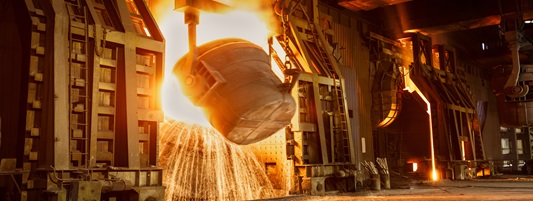Overview
The industry sector is responsible for a third of the global energy and process-related CO2 emissions (excluding land-use emissions), with particularly process-related CO2 emissions being difficult to address. Over 70% of these emissions come from four industrial sectors of iron and steel, cement, chemicals and petrochemicals, and aluminium. Reaching net-zero emissions across these industrial sectors will require radical shifts in how materials are produced, consumed and disposed of.
Industry sector decarbonisation
IRENA supports countries in formulating strategies to effectively decarbonise hard-to-abate sectors of iron and steel, cement, chemical and petrochemicals and aluminium. To reach net-zero emissions the industry sectors would require a combination of the following solutions:
- Reduced demand and improved energy and material efficiency: Along with circular economy practices and structural changes, this would lead to substantial reductions in industrial energy consumption by 2050.
- Direct use of clean electricity produced predominantly from renewable sources: The direct electrification share in industry would rise from 28% in 2018 to 35% by 2050. For low-temperature industrial heat needs, heat pumps installations would increase by 80 million by 2050.
- Direct use of renewable heat and biomass, including solar thermal, geothermal, biofuels and bio-feedstocks: For medium- and high-temperature heat requirements, as well as for chemical feedstocks, biomass will play a significant role, requiring over 36 EJ of biomass by 2050, up from 8 EJ in 2018.
- Indirect use of clean electricity via synthetic fuels and feedstocks: The use of hydrogen and synthetic fuels and feedstocks in industry would climb to over 38 EJ by 2050.
- Use of carbon dioxide removal and carbon capture and storage measures – including coupled with bioenergy (BECCS). Some emissions, particularly process emisssions, cannot be addressed by other means, and the combination with biomass with CCS could deliver some negative emissions. In 2050, around 4.5 GtCO2 would be captured by BECCS and CCS in industry.
Energy transition strategy and components


To achieve the complete decarbonization of industry under the IRENA 1.5°C Scenario, investment in industry would have to increase to USD 14.5 trillion by 2050, amounting to USD 486 billion per year.
Investment in the industry sector under the IRENA 1.5°C Scenario




